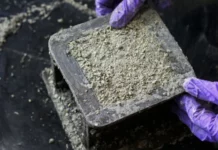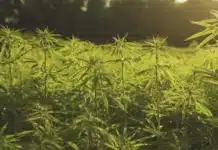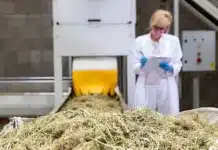Only in Hawaii: Despite 2016’s law enacted to allow Hawaii’s farmers to grow industrial hemp and 2017’s Legislative passage of Senate Bill 773 — relaxing costly requirements and red tape to make it easier for farmers — weak leadership is jeopardizing farmers’ livelihoods and needlessly stalling the historically proven agricultural crop.
Hemp can be refined to produce building materials, paper, clothing, nourishing food, insulation, animal feed, biodegradable plastics, paint, biofuel and more.
The inexcusably slow path of growing hemp in Hawaii is riddled with Hawaii Department of Agriculture delays and even Alexander & Baldwin’s reluctance to invest in industrial hemp as a replacement for our defunct sugarcane industry. This includes 35,000 acres on Maui, where about 700 people lost their jobs.
Where these Hawaii leaders fear to tread, other smart states are seizing the chance to cash in on the trending fibrous crop.
In early March, North Carolina made global headlines when Hemp Inc., a publicly traded company focused on providing green solutions, announced the growing of 25,000 acres of industrial hemp in 2018. It’s expected to improve farmer profitability and boost the economy by opening new marketplace revenue streams for buyers and farmers seeking higher quality products.
We’re Being Left Behind
Hemp progress is happening in other states while Hawaii’s leaders drag their feet. Adding insult to injury, ours is the only state in the United States capable of harvesting three crops yearly because of our tropical climate. Teed up to lead our nation with hundreds of thousands of available acreages, a crop-friendly climate envied by forward-thinking states and the passage of laws since 2016, the top government head’s and the HDOA director’s tepid pace are ramming Hawaii to the rear.
Now approaching mid-2018, the ridiculous, bureaucratic obstructions for Hawaii include:
• A one-year-and-counting procedural delay after the HDOA invented an extra step, which the law neither references nor requires. It demanded a Request for Proposal for seed development. This despite previous University of Hawaii projects dating back to 1999 — mandated by the Legislature — which already identified a useable Chinese seed for planting.
• Licensing applications for eager farmers delayed one or more years while waiting for the pointless RFP step above to conclude. The HDOA website earlier stated that online applications might be available to farmers in February, which was then delayed til March. Most recently, it was shelved again til April 2018, according to the HDOA.
• The HDOA legislative coordinator testifying in lieu of his boss, Ag Director Scott Enright, at a March 2018 committee hearing that their department has done no commercial-hemp application testing and has “no viable seed.” As noted, UH long ago tested and approved the Chinese seed.
• No loans available to help small farmers. The U.S. Department of Ag’s Honolulu office claims that funding is impossible because it operates at a federal level, where the Drug Enforcement Agency lists the cannabis-plant species as a controlled substance. Fact: Industrial hemp comes from a different strain of the Cannabis sativa species than the drug. Simply put, industrial hemp can’t get anyone or anything high.
• The HDOA in 2017 insisted on spending time on a trial planting of Jamaican seed, which failed when it didn’t sprout. It also refused to allow the importation of domestic seeds or readily available seeds from other states.
Despite their gross ineptitude, we in the Legislature, higher learning institutions, willing and eager farmers, the community and businesses move forward with Hawaii’s best interest at heart. For one, UH’s planting trials of the Chinese seed under various growing conditions continues progressing.
Furthermore, I recently met with the interim dean, professors and engineers from UH’s college of engineering.
We teleconferenced with Bruce Dietzen, a former Dell executive who in 2016, became front-page news worldwide when he invested $200,000 of his own money to build and unveil his two–seater sports car made from hemp. The car’s body is made of three layers of woven hemp and is apparently 10 times more resistant to dents than steel. The environmentally friendly car runs on recycled agricultural waste and shared the spotlight with car enthusiast/icon Jay Leno.
Carbon-Neutral Autos
Enter Tesla. Tesla’s contribution to the possibility of Hawaii’s first-ever student-made hemp car — which could pave the way for the not-too-distant future of carbon-neutral autos — might be the chassis, according to Tesla’s rep, who met with me.
“The future is bright for the Paradise State now that hemp can be grown there,” Dietzen stated from Florida. “I can’t think of any place on Earth where hemp can make a bigger impact … filling the void of lost sugarcane revenues, enabling the next generation of carbon-negative manufacturing and fuels, jobs, ecology, self-sufficiency. The list goes on. Hawaii would be the shining example for the country to follow.”
Obviously, agricultural hemp for Hawaii is a no-brainer. The only obstacles keeping our state from thriving from hemp’s widespread commercial cultivation are the State HDOA and A&B heads. All the local laws and backing fell into place years ago.
Fear of new things can be scary for some execs, but it shouldn’t deprive the majority who would benefit nor should it waste the agricultural advantages of our best-positioned state. Unfortunately: “Only in Hawaii.”














